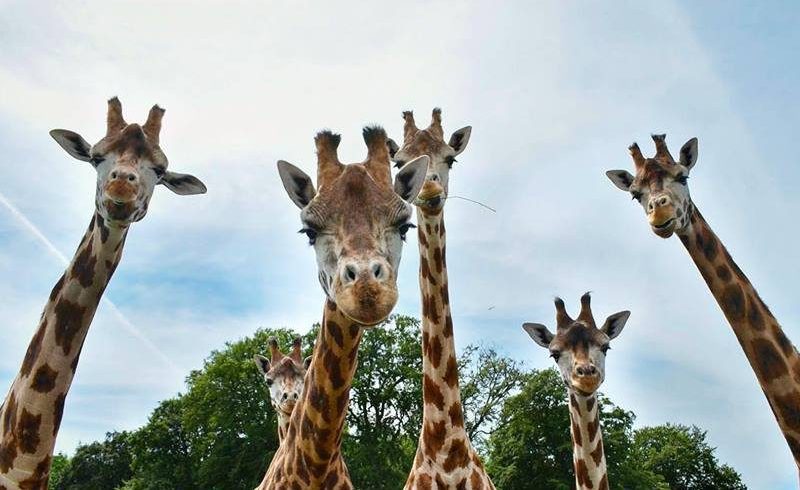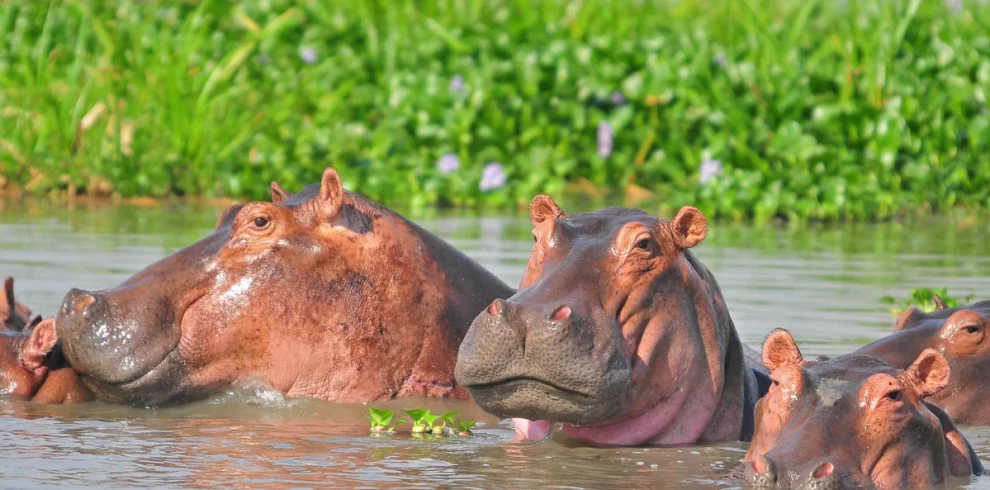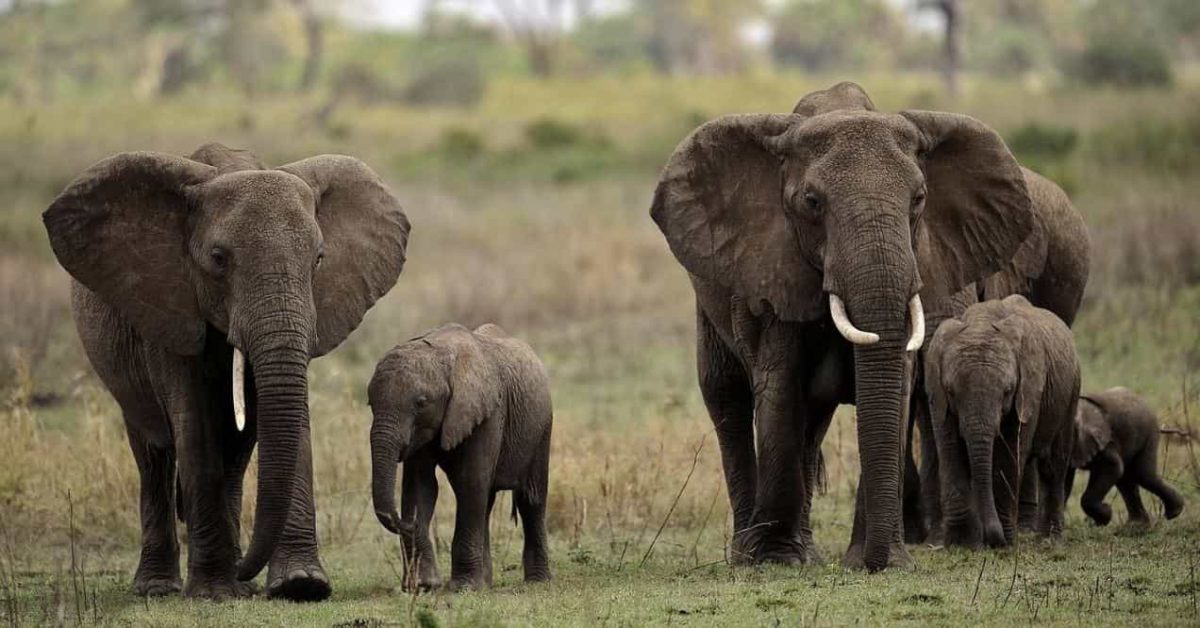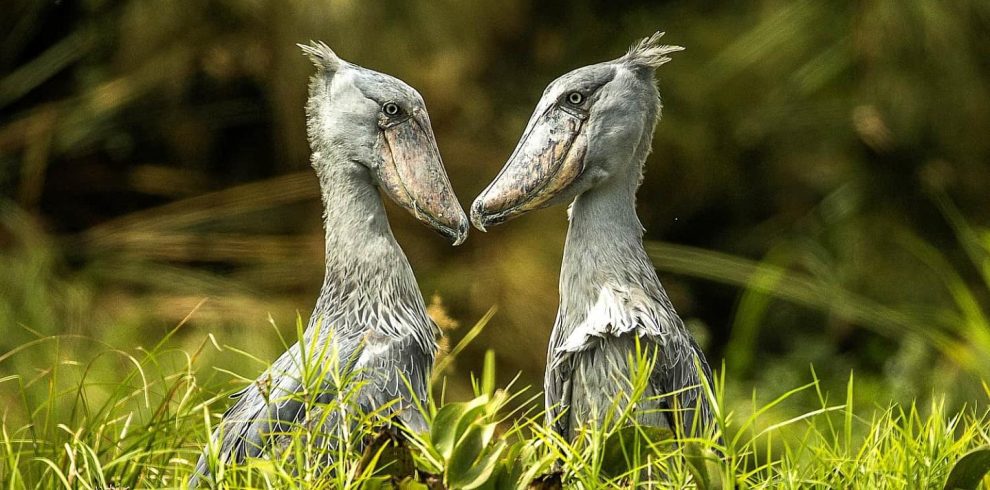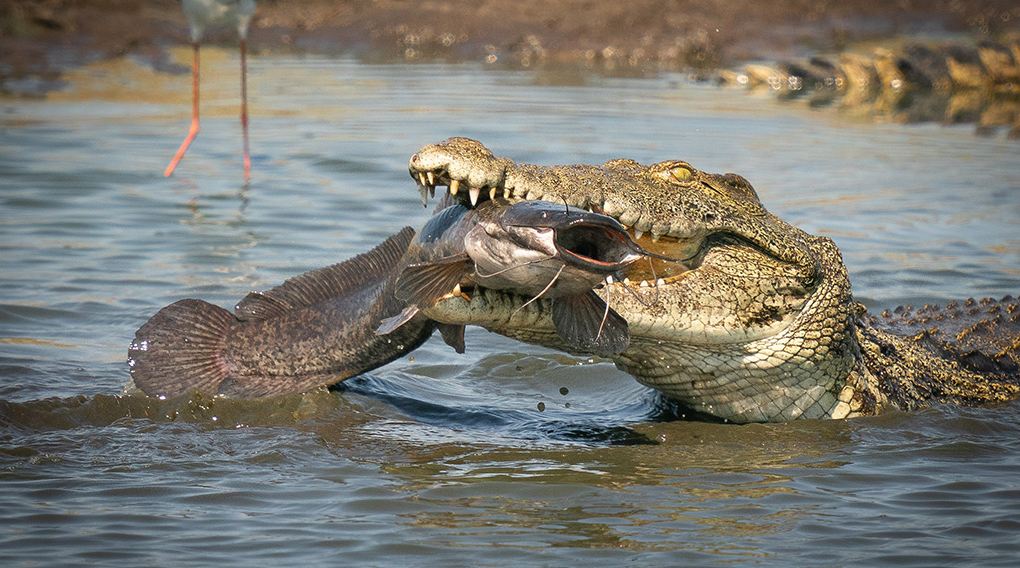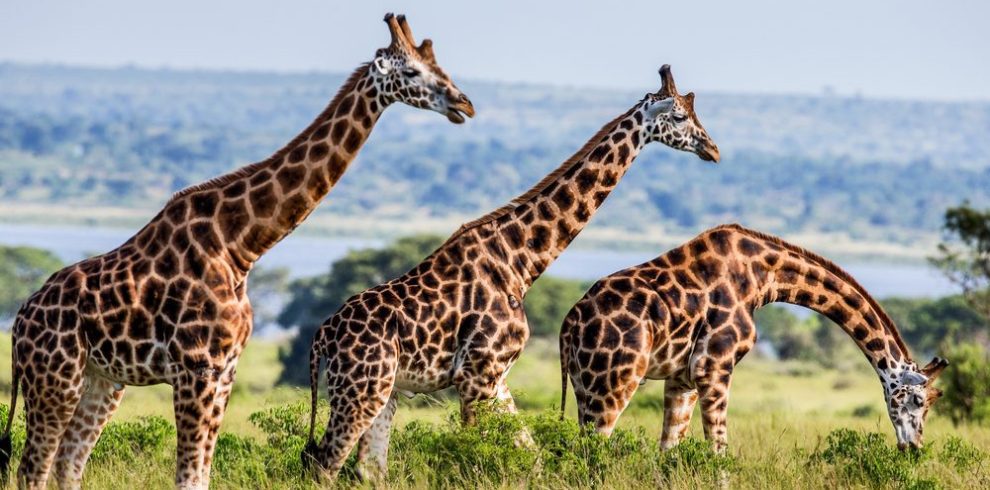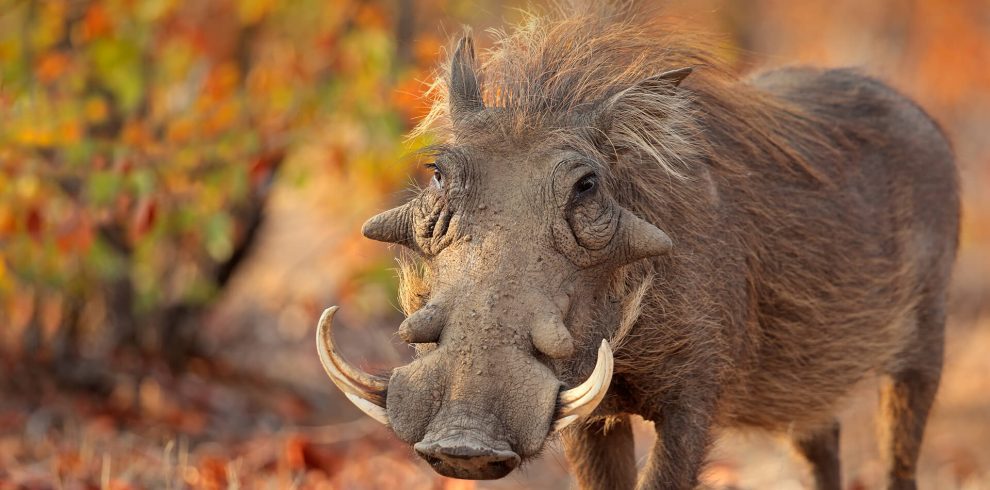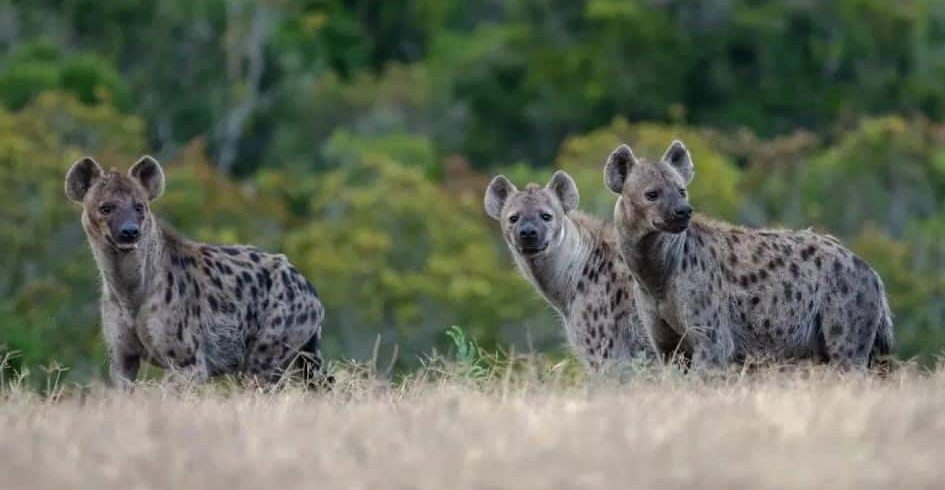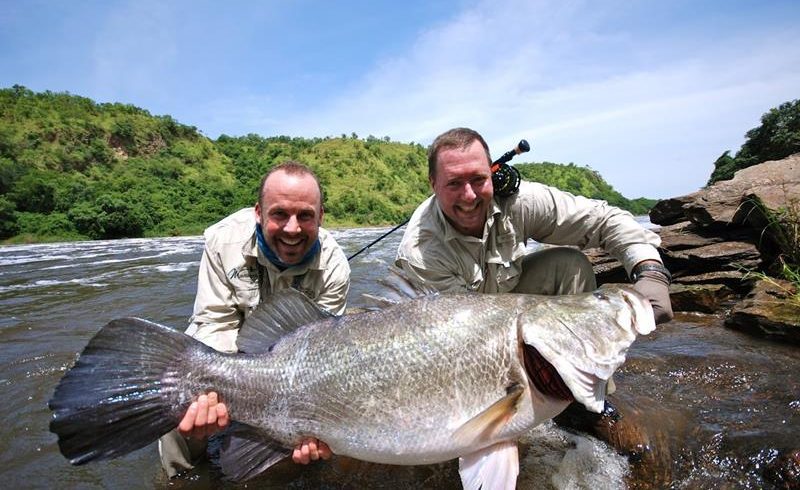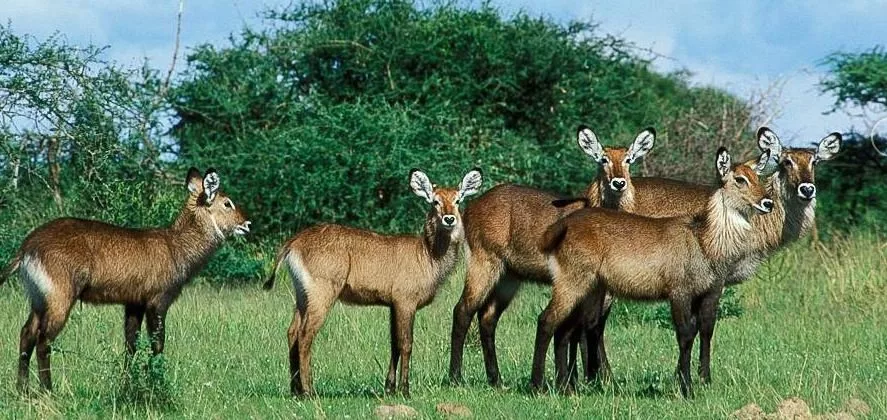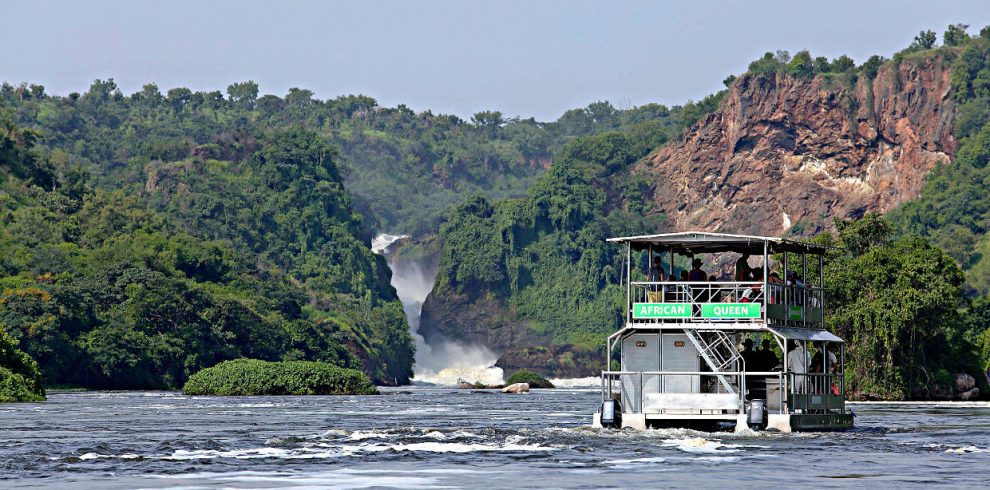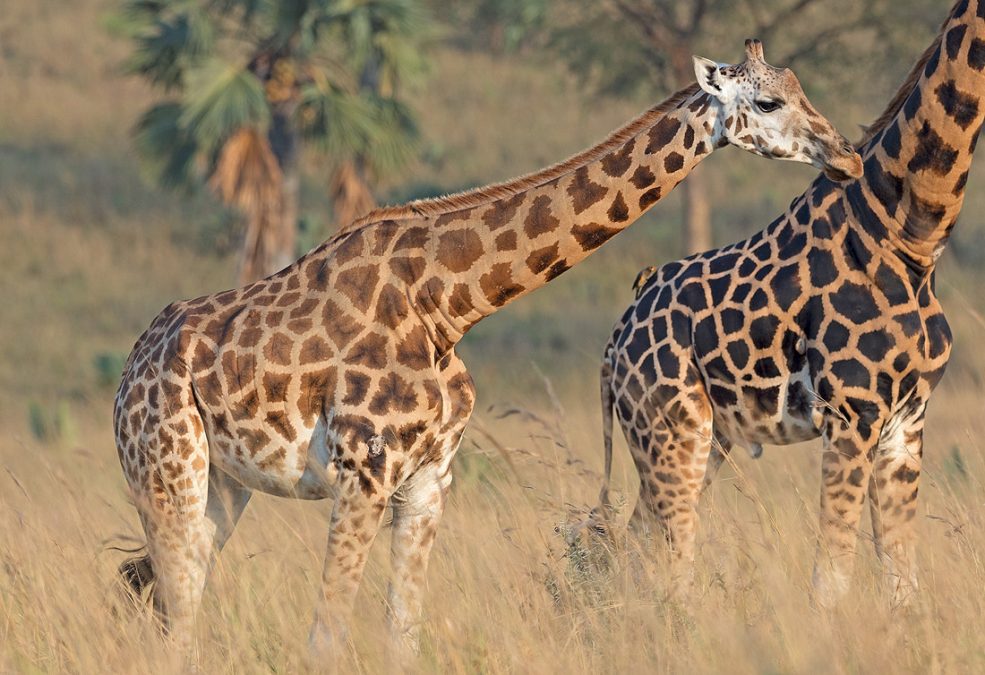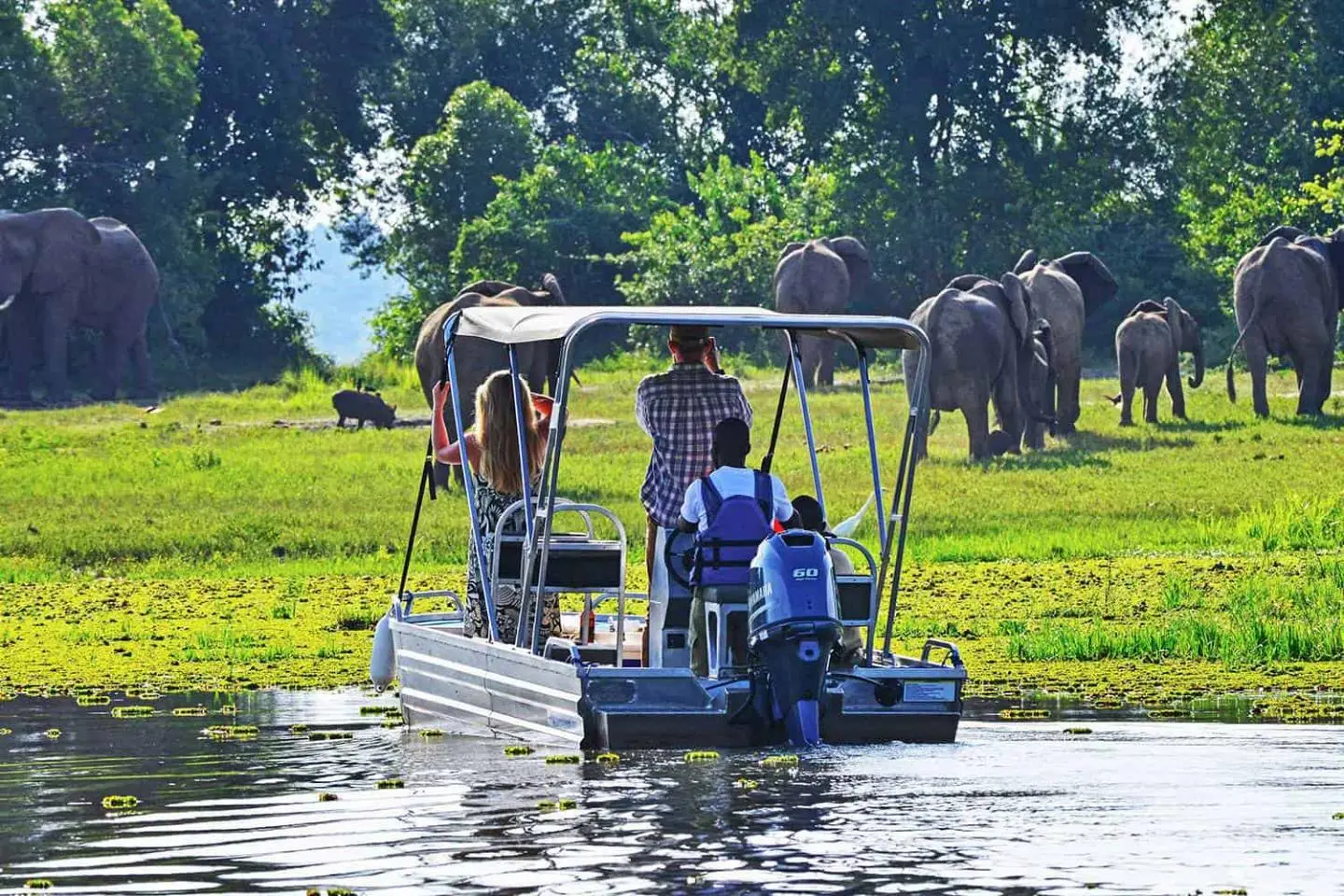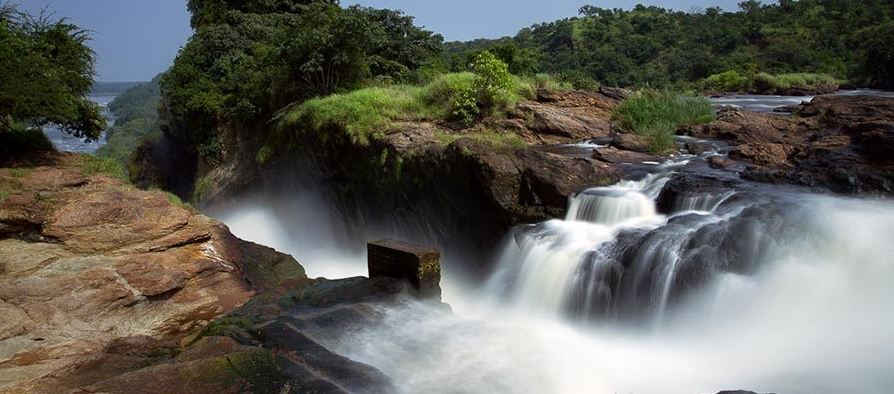Table of Contents
ToggleAnimals in Murchison Falls National Park include over 450 bird species and 76 species of mammals. This Uganda safaris park is home to four of the Big Five animals.
The most common animals include buffalos, elephants, giraffes, Uganda kobs, warthogs, crocodiles, hippos, waterbucks, and hyenas. The animals in Murchison Falls National Park are often seen while on a boat cruise and also during game drives in the park.
The adjacent Budongo Forest is home to 600-700 chimpanzees, our closest relatives. Some of the communities have been researched and habituated for the past 30 years. It is one of the best places for chimpanzee trekking in Uganda. The Nile River in Murchison Falls National Park is home to the great Nile perch, Tigerfish and catfish!
The best time for wildlife viewing is the Dry season (from December to February) when animals congregate around the Nile River and other reliable water sources.
Here Is A Quick Guide To The Most Likely Animals You Will See In Murchison And The Frequency Of Sightings:
| Animals | Sightings |
|---|---|
| Giraffe | common |
| Elephant | Common |
| Buffalo | Common |
| Lion | Ocassional |
| Crocodile | Abudant |
| Hippo | Abudant |
| Leopard | Rare |
| Uganda kob | Abudant |
| Jackson's Hartebeest | Common |
| Oribi | Common |
| Waterbuck | Common |
| Bushbuck | Common |
| Patas Monkey | Common |
| Spotted hayena | Ocassional |
| Warthog | Common |
| Chimpanzee | Ocassional |
| Baboon | Common |
| Sheobill | Ocassional |
| Grey-Crowned Crane | Common |
What Animals Live in Murchison Falls National Park?
1. Hippos
During your Murchison Falls wildlife safari in Uganda, you will see plenty of hippos.
Hippos in Murchison Falls National Park spend their days submerged in the cool water of the Nile with only nostrils, eyes, and ears exposed, blinking in the abundant sunshine.
Periodically they duck back under the surface of water and then bobble back up again, blowing excess water from their nostrils and flicking it from their little pink ears. Sometimes you can witness them squabbling or engaged in rough play with one another, mouths wide open to display their incredibly long canine teeth, and making quite a splash with their huge bodies.
The main reason hippos stay submerged in water during the day is because their vulnerable skin seems unable to stand the effects of the strong equatorial sun.
When night descends, these Uganda animals finally emerge from their water bed and graze by starlight under the cool relief of night. In spite of their bulky appearance; hippos are quite swift on the ground and can run faster than a human. Hippos have been known to wander several miles from their pool while grazing, but by the time sunrise burns through the morning haze, these portly beasts will have taken refuge once again in their pool retreat.
2. The Big 5
Hundred years ago, lion, rhino, leopard, elephant and buffalo were the most sought-after animals to hunt. People would travel thousands of miles from Europe and America to Africa just to hunt and kill these beautiful animals of Africa!
These days, however, the Big Five are the most sought-after animals to see and shoot with cameras, not guns. Murchison Falls National Park offers its visitors the opportunity to see four of these incredible creatures. More than 10,000 buffalos call the park their home.
Murchison Falls is also well-known for its huge herds of African elephants – the world’s largest land animals. Over 1,330 individuals live in the park and are at an increase. Lions are regularly observed on game drives north of the Nile.
Leopards are slightly more elusive to find on a Murchison Falls National Park tour but with a little luck and good timing you should be able to see them. Rhinos are yet to be reintroduced to the Murchison Falls National Park, but you can easily track them on foot in the neighboring Ziwa Rhino Sanctuary. The sanctuary is currently home to 34 Southern White Rhinoceros.
3. Shoebills
Over 450 bird species can be found in the Murchison Falls National Park! Because of this incredible diversity, the park is one of the best places Uganda bird watching tours. For birders and non-birders, the prehistoric looking Shoebill stork is high on the list of must-sees, and the swampy Nile Lake Albert Delta is one of the best places to spot one.
4. Nile Crocodiles
Beneath the waters of the Nile River in the Murchison Falls National Park in Uganda lurks hundreds of monstrous Nile crocodile. The Nile crocodile is one of the largest crocodilian species on Earth, second only in size to the saltwater crocodiles of Asia and Australia.
These huge prehistoric animals of up to 6m long boast exceptional biting force and hunting abilities. Younger crocs mainly rely on regular meals of invertebrates, amphibians, and fish. But those that survive to adulthood will attain the status of apex predator, capable of ambushing large prey twice their size including buffalo, giraffe, humans, and even baby elephants.
5. Rothschild’s Giraffe
As the tallest animals on Earth, giraffes do not exactly keep low profile and probably need little by way of introduction. It is an animal so peculiar in appearance that its scientific name – Giraffa camelopardalis – reflects its perceived similarity to both a camel and … a leopard.
Murchison Falls National Park is home to approximately 1,250 Rothschild’s giraffes, more than half the global population of this localized subspecies. The herds of giraffes here are possibly the largest you will ever see, often numbering 30-plus individuals – a memorable sight as they march through the palm-dotted savannah grassland in the northern part of the park.
6. Common Warthogs
The endearing Common Warthog is a commonly seen animal in the bush in Murchison Falls National Park. These funny little animals resemble pigs.
Listed as one of Africa’s “Ugly 5”, the Warthogs feed on their knees. They are primarily grazers who spend most of the morning and late afternoon foraging. When startled they run away with their tails sticking straight up in the air. But don’t let their funny appearance fool you completely – the tusks on a male warthog can rip open a lion.
7. Olive Baboon
Also known as the Anubis baboons, Olive baboons are common animals in Murchison Falls National Park. You can spot them almost everywhere in the park. These versatile and highly intelligent monkeys are known to be a confident opportunist, so keep your tent flaps closed and your picnic lunch out of sight if you are on camping safari here.
The canine teeth of an adult male baboon are longer than those of a leopard. He will use them in yawning threat displays to rivals but also as lethal weapons, both in attack and self-defense. Baboons, like us, rely on subtle social skills for survival.
8. Spotted Hyena
During your wildlife safari at Murchison Falls, you’re likely to fall asleep to a distant, whooping serenade of laughing hyenas.
These animals in Murchison Falls National Park are among the most misunderstood animals in the world. They are hated as cowardly, thieving; dirty, ugly, lazy…the list goes on. These impressions are embedded in human history and public consciousness then reinforced by mainstream media and films. Fortunately, though, more and more people are coming to appreciate hyenas for the fascinating creatures they are.
These Uganda animals play a vital role in the ecosystem by consuming carrion – they’re Mother Nature’s recyclers! Their notorious (and often feared) laugh-like vocalization is just one of the many sophisticated ways in which they communicate.
9. Patas Monkey
Murchison Falls National Park is also one of the best places to see the unique ground-dwelling Patas monkeys. These Uganda primates spend 60 percent of their lifetime on the ground.
Trees are mainly used if danger arises. Patas monkeys are also the fastest primates in the world; they can run up to 55 kilometers (34 miles) per hour! They’re social primates and live in large troops of up to 60 individuals! Female juveniles usually remain in family groups, whereas male juveniles usually leave these groups at sexual maturity.
10. Fish
The Nile River in Murchison Falls National Park is home to the great Nile perch, Tigerfish and catfish! The Tiger fish has beautiful colors of the rainbow, but one look at their vicious teeth leaves you in no doubt they are savage predators.
The Nile Perch is one of the world’s largest freshwater fish. It can weigh more than 220kgs. The record largest Nile Perch in Murchison Falls was 114kg, caught by Kevin Nicholson in 2013, just eclipsing Tim Smith’s 113kg catch in 2009. World-famous anglers who have been on the Nile in Murchison looking for that big one include Zeb Hogan of the Monster Fish – National Geographic and Jeremy Wade – River Monsters presenter.
11. Antelopes
Antelope’ is a term used for even-toed ungulate species with bony horns confined to Africa and Eurasia. They are known for their long, slender legs which give them great speed. Their unbranched horns do not shed like deer.
Murchison Falls National Park is home to several species of antelope, including Defassa Waterbuck, Bushbuck, and Oribi, Sitatunga, Jackson’s Hartebeest, Grey duiker and Bohor reedbuck. The park also hosts around 35,000 Uganda kobs – the Uganda national animal.
12. Chimpanzees
Budongo Forest Reserve which is adjacent to Murchison Falls National Park is home to 600-700 chimpanzees, our closest relatives. Some of the communities have been researched and habituated for the past 30 years. Read more about chimpanzee trekking in Budongo Forest.
Different Ways To See Animals In Murchison National Park
1. Game Drives
Animals in Murchison Falls National Park can be explored on a 3 to 4-hour game drive. Game drives are mainly done in the northern section of the park, which is dominated by open savannah grasslands. To begin, you can head for the Albert delta track, where many water birds, buffaloes, crocodiles, lions, and giraffes can be found.
The Buligi Peninsula track is a prime game viewing area because the open grassland is hugged by the Nile River. Here you’ll likely spot giraffes, elephants, buffalos, leopards, an hippos.
2. Boat Cruise
Another wonderful way to see animals in Murchison Falls National Park is by boat cruise. There are two boat cruises to choose from at Murchison Falls National Park, each heading in a different direction along the Nile that cuts through the park.
The Albert delta boat cruise commences from Paraa and takes you down the Nile River towards the shores of Lake Albert. It travels 28 kilometer cruise, taking between 4-5 hours. The morning session is best for watching birds, especially the prehistoric-looking shoebill stork.
The second cruise, the launch trip, leaves Paraa leading you upstream towards the stunning Murchison Falls. Once reaching the falls, you can witness the water cascading through a small 8 meter gorge, creating an almighty splash and carrying mist through to the boat. As you cruise along the Nile River water, passing pods of hippos, crocodiles, waterbirds, and bathing elephants, the 3-hour trip won’t feel long enough.
3. Hiking and Nature Walks
You can hike to the top of the Murchison Falls, or enjoy a nature walk through Budongo Forest in search of birds and chimpanzees.
Ready To See The Wildlife Of Murchison Falls National Park For Yourself?
Get in touch with our Uganda Safari Experts to start planning your safari to see Murchison Fall National Park’s wildlife in person. With almost 10 years of experience and knowledge, we are professionals in crafting tailor-made itineraries that are sure to be the trip of your dreams.

